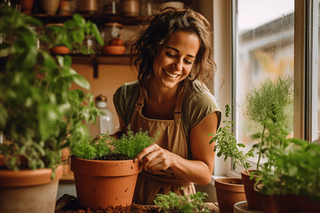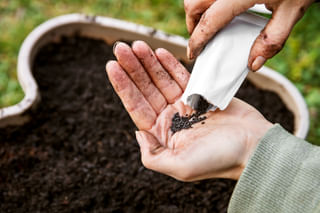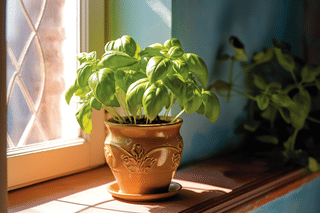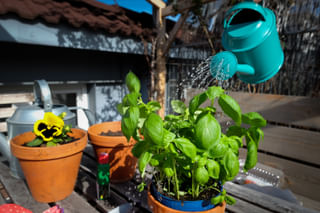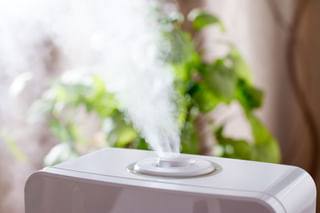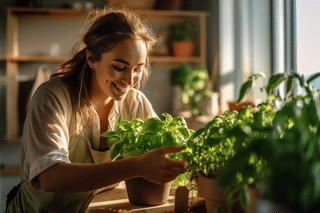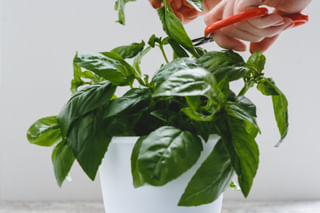The Ultimate Basil Plant Care Guide
Master the art of basil plant care with this comprehensive guide. Learn about watering, humidity requirements, fertilization techniques, pest control, and finally, the joy of harvesting your own basil leaves. Ideal for beginners looking to grow their first basil plant both indoors and outdoors.
Key learnings from this plant care guide
- Growing basil is simpler than you might think, and with a few tools and supplies, you can have your own thriving basil plant in no time.
- Whether you choose to grow basil from seeds indoors or outdoors, providing the right amount of sunlight is crucial for its growth and health.
- Watering your basil plant properly is essential; water when the top inch of soil has dried out, but avoid overwatering to prevent root rot.
- Regular fertilization with a balanced fertilizer will keep your basil plant healthy and thriving, but be sure to follow the instructions on the fertilizer label to avoid over-fertilizing.
Basil has always been a favorite of mine. I love the way its aroma fills my kitchen and infuses whatever dish I'm preparing with a deep, rich flavor. But until recently, all of my basil was store-bought; I never knew how to grow it myself. That is, until one fateful day when I stumbled upon some helpful advice from an unlikely source: my gardener neighbor!
He told me that growing basil isn't as hard as you might think: it's quite simple. With just a few tools and supplies, you can have your little pot of basil in no time at all!
In this plant care guide, we'll look at everything you need to know about basil plant care, including its favorite growing conditions, the amount of sunlight it needs, and how often it should be watered. We'll also share some helpful tips and techniques for growing a thriving basil plant, so you know how to grow your basil plant from a tiny seed to a lush, leafy herb ready for harvest.
These are the topics we're going to cover:
I'll start this plant care guide by telling you how to grow this plant from seeds, both indoors and outdoors. If you've bought a plant, you can skip these sections and go straight into the basil care tips. Let's learn how to grow this incredible herb!
Growing basil from seeds indoors
Before we can start to grow our basil, decide whether you want to grow your basil indoors or outdoors. If you choose to grow it indoors, choose an area in your home that gets plenty of indirect sunlight: at least six hours daily. Then get yourself some soil, a general potting mix is best, a pot or container for the plant to live in, and a packet of basil seeds.
Once you've got these ready to go, fill the container about halfway with soil then sprinkle on enough water so that it reaches a moist but not soggy consistency. This will help nurture those tiny seeds so they can sprout into beautiful little plants! After planting each seed about two inches apart from one another (watch out for overcrowding!), lightly cover them with more soil before adding a bit more water on top to keep them hydrated over time.
With a little patience and care over several weeks, there should be healthy green leaves popping up everywhere throughout the pot.
Growing basil from seeds outdoors
If you've got a love for fresh, aromatic basil like I do, growing it from seeds outdoors is a great idea. For this to be successful, wait until the late spring or early summer if you live in a colder climate. If you live in a warmer climate, you can start earlier in the year. The temperatures shouldn't go below 50F (10C) for this plant to thrive.
Let's start with the basics: You'll need a spacious pot with good drainage, some high-quality potting mix, and a packet of basil seeds. Fill your pot with the potting mix, then sow your basil seeds just below the surface. You don't want to bury them too deep. Give it a gentle watering to make the soil moist but avoid over-saturating it.
Next, consider your location. Basil thrives when it gets six to eight hours of sunlight each day. Look around your garden or patio and find a spot that gets plenty of morning sun, but is not in the full sun in the afternoon.
After a week or two, you should start to see the plant poking through the soil and you'll be ready to move on to the next section in this plant care guide.
Ideal sunlight for basil
Whether you've been following along from the start and have grown your basil plant from seeds, or you've jumped ahead and purchased a fully grown plant, we're now on the same page. Now, let's delve into how we can best care for this delightful herb.
Basil plants love sunlight, but they do not like it too much direct sunlight. Their leaves are thin, soft, and dry out very quickly. Too much direct sunlight can cause the leaves to wilt and wither.
If you've chosen to grow your basil indoors, place the plant near a sunny window source that gets bright, indirect sunlight during the day. On the other hand, if you're growing your basil outdoors, choose a spot where the basil is in the full sun in the morning, but is in partial shade during the afternoon. The morning sun is not strong enough to burn your basil plant's leaves but does help it to photosynthesize and stay healthy.
Watering your basil plant
If you've taken care of tropical houseplants before, you'll have no trouble watering this plant. The basil plant thrives in soil that's moist all of the time. The plant doesn't store a lot of moisture in its stems and leaves, so it relies on the soil to keep it hydrated.
Watering frequency
You know it's time to water your basil plant when the top inch of the soil has dried out. You can test this by sticking your finger in the soil and seeing if any of the soil sticks to your finger. On average, you should water your basil every 3-4 days, depending on the temperature and humidity levels in your home.
Especially in the beginning, it's important to regularly check the moisture level of the soil, so you can find out exactly how often you should water your basil plant. Check daily until you notice the top of the soil is dry. I can only give you a rough estimate based on my own experience, but it might differ for you.
If the top of the soil is still moist after 3-4 days, simply wait to water your plant for another day or 2 and check again. It's important to avoid overwatering your basil.
Moist vs. wet soil

The biggest challenge for most plant owners is to find a good balance between moist soil and wet soil. Moist soil is great, but wet soil is not as this will cause root rot on your basil plant. So how do you tell the difference?
If your soil is wet, you'll see a slight shine of the water on the soil. If you were to pick on a chunk of soil, it'll drip water. The soil will also look very dark and the pot will be heavy: much heavier than just the pot and the plant. The soil will feel almost muddy if you were to stick your finger in it.
On the other hand, moist soil will not be shiny and will only be slightly darker than it would be if the soil was dry. If you pick up a chunk of the soil, it won't drip any water as the soil will be saturated, not over-saturated. The soil will still feel damp when you touch it, but it won't feel muddy: it still has the soil texture.
Signs of overwatering
Overwatering a plant happens to the best of us from time to time. It's nothing to feel bad about. The symptoms of overwatering include yellow or dropping leaves. If you notice these signs, reduce your watering.
Signs of underwatering
On the other hand, underwatering can cause wilting and slow growth. If the plant looks droopy, especially in the heat of the day, it may need more water.
Humidity
A basil plant loves a bright spot and thrives in moist soil, so it's no surprise that this plant loves a humid growing environment. The ideal humidity level for a basil plant is between 40% - 60%. Luckily, most homes should already have this humidity level, so it's likely you don't have to think about changing this.
If your home is especially dry or you live in a very dry environment, you can help to raise the humidity by misting your basil from time to time. Keep in mind that you do this during the morning, so the leaves have time to dry up before it's nighttime.
If the leaves stay overly wet during the nighttime, fungal diseases can start to form. Luckily, there is an easy way to prevent this, besides letting the leaves dry. Place your basil in a spot with great air circulation to reduce the risk of a fungal disease.
Fertilizing basil plants
Like most other fast-growing plants, basil plants should be fertilized regularly to stay healthy while they're growing. When your basil has grown two to three sets of leaves, you can start to fertilize it once per month with a balanced, all-purpose fertilizer. A great ratio for a basil plant is 10-10-10 (NPK).
During the fall and winter, you shouldn't fertilize your basil, as it won't grow very much during this time of year. You can start again at the beginning of spring.
Keep in mind that these fertilizing instructions are just my own experience and could vary for you. It's important to read the label of the fertilizer you've got to find out if you need to fertilize it more or less often. Not all fertilizers are created equal in this case.
It's important to follow the instructions on the label of your fertilizer, as this will help you to prevent over-fertilizing your basil as this can burn the roots. If your plant's leaves start to turn yellow or brown around the edges, or if the plant seems to be growing very quickly but isn't producing flavorful leaves, you might be over-fertilizing.
Pest control
Spider mites are one of the most notorious pests of basil plants. Tiny but mighty, these creatures can cause quite a bit of damage to your plant and they're quite hard to find at first. Although they're tough, it's not hard to keep them away! By simply keeping the area around your basil plant clean and dust-free, you can prevent them. Additionally, a mild soap solution can help get rid of those that are already present. Taking a few precautions and putting in some preventative care can do wonders for your basil plants!
Harvesting a basil plant
After you've taken great care of your basil plant, you can think about harvesting your basil leaves. The perfect time to begin harvesting is when the plant has reached about 6 to 8 inches in height, which happens in the span of 60 to 90 days from planting.
At this point, your basil plant should have enough foliage that it can withstand a little pruning. Don't worry about hurting your basil plant by harvesting the leaves. Regular harvesting encourages the plant to branch out and produce even more leaves.
To harvest your basil, snip off a few leaves or an entire stem, but always make sure to leave a couple of leaves on the plant. Always cut just above the point where a pair of leaves sprouts from the stem; this is where new growth will come out.
After harvesting, rinse the leaves or stems under cold water to remove any dirt. If you're not planning to use the leaves immediately, store them in a glass of water (just like a bouquet) in a cool place out of direct sunlight. This will keep your basil leaves fresh until you're ready to use them.
Growing a healthy basil plant is quite a simple task once you know some tips & tricks! So, why not give it a try?
Thank you for reading this post! I hope it helps you to keep your plants healthy and beautiful! If you're looking for more guides on specific plants, you can always request a plant guide to get a guide for the plant you have trouble with.
Test your plant care knowledge
Quiz completed!
Want to learn more? Sign up for my newsletter to receive free tips in your inbox!
Sign up now!
